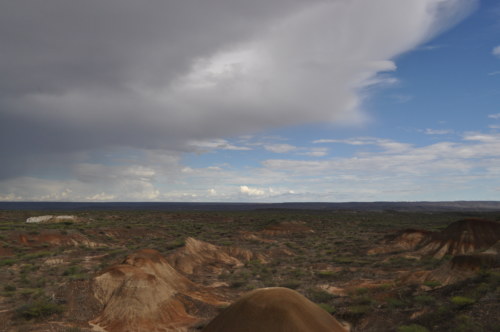
The calm weather at the start of the week was perfect for our well-planned trip to Buluk. We set off early enough to get to the camping site in time, set tents and prepare for a mini-field trip in the afternoon.
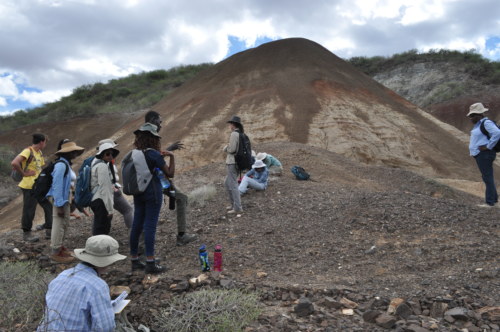
At the valley of bones.
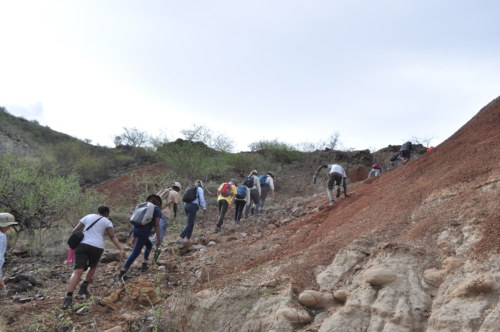
Up the hill, we go!
Buluk is one of the richest early Miocene sites on the East of Lake Turkana with many fossils of the early African Mammalian ancestors. Complete faunal remains and fragments have been collected from the area. The fossil record in Buluk boasts of various extinct families of the now living mammals that include; elephants, rhinoceros, carnivores, pigs, and primates. Tragulids which are small ungulates represented by the extant Chevrotains/Mouse-deer are also present in the fossil record.
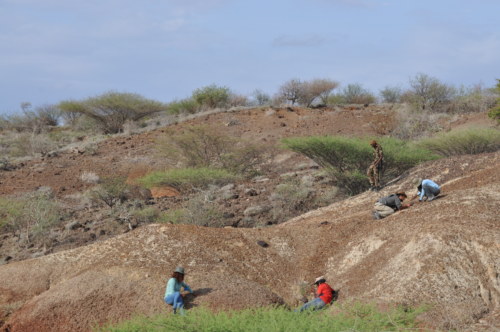
Students prospecting the Aron’s Valley.
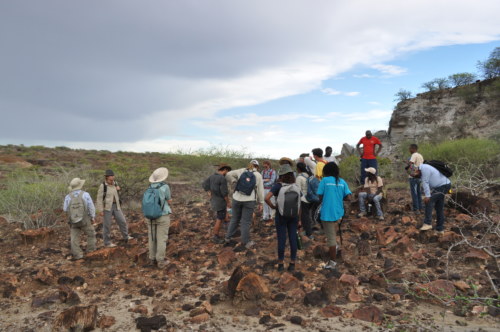
Students looking at some of the fossil wood in the area.
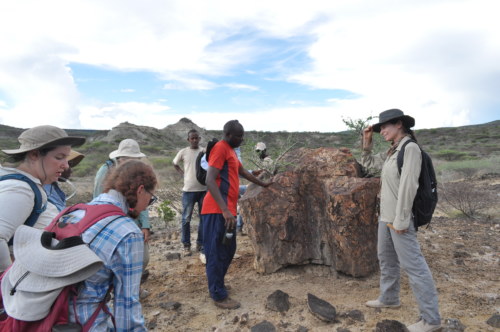
Prof. Miller with the students at the fossil wood locality.
Hunting for fossils is not an easy task as many may think. Prof. Miller encouraged the students to be optimistic and keen while walking around, sit down or even hill crawl when looking for fossils. Our fieldwork in the Valley of Bones and Aron’s Valley was a success. Not only did the students find nice fossils but they were also able to identify them in their respective orders.
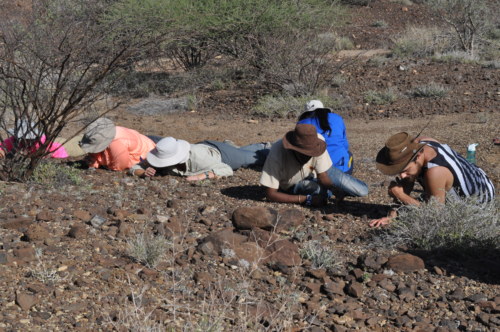
Students in hill crawl.
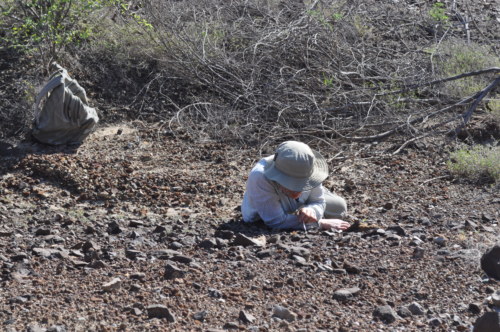
Natasha busy looking for fossils.
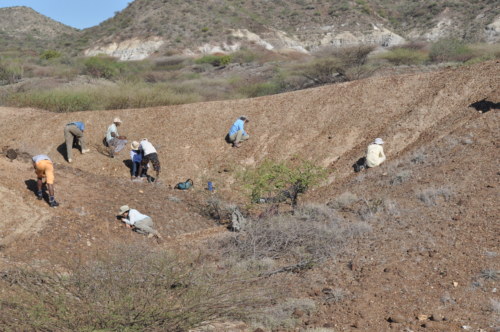
The TBI staff also helped in prospecting.
There are protocols to be followed when collecting fossils in the field. The specimen to be collected should be at least identified taxonomically, record the date of collection, field number, site name, collector, take the GPS points, take photographs and compass direction of the fossil in its original orientation, record and take contextual images. Such information assists researchers in data analysis or future researchers coming back to the site.
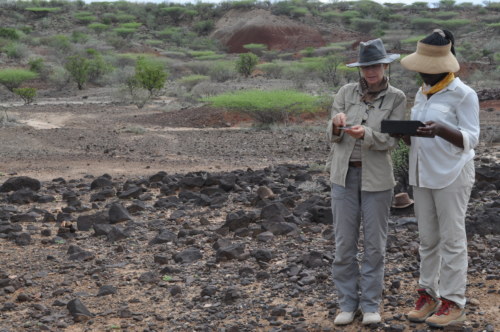
Prof. Miller shows Hillary how to catalog fossils in the field.
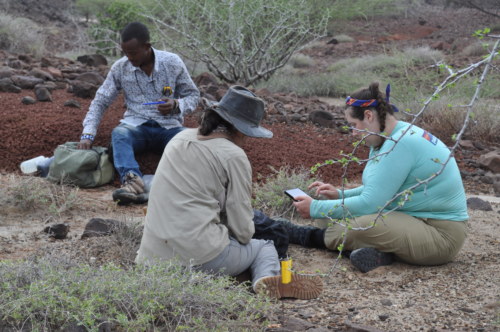
Adalind working closely with Prof. Miller.
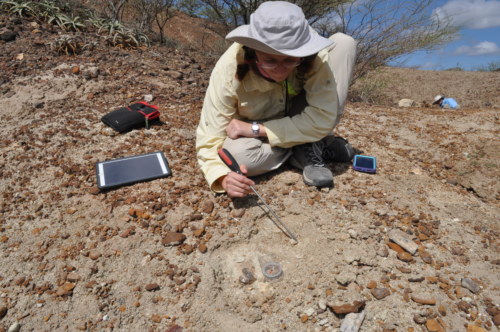
Keely found a rhino tooth.
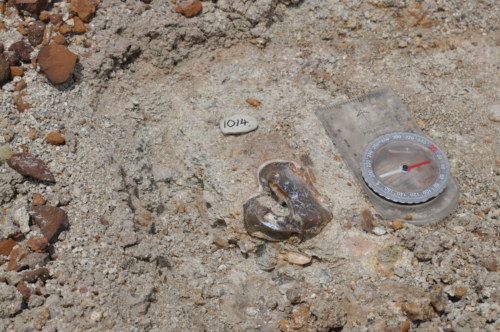
The extinct rhino tooth found by Keely.
Buluk deposits are hosts to extinct Miocene Old World Monkeys that are studied by Prof. Miller. The Fall program was very productive as students found some of the fossil teeth that are attributed to Noropithecus bulukensis. The extinct Old World Monkey is known from a fragment of a right mandible. One of the students found a molar that belonged to this Old World Monkey.
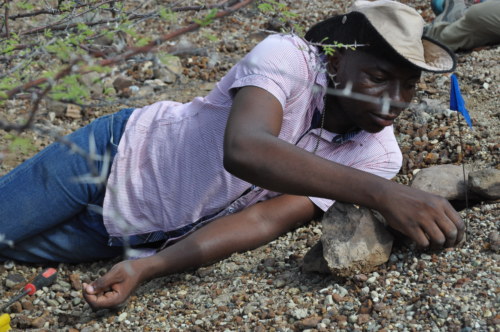
Basil flags a fossil.
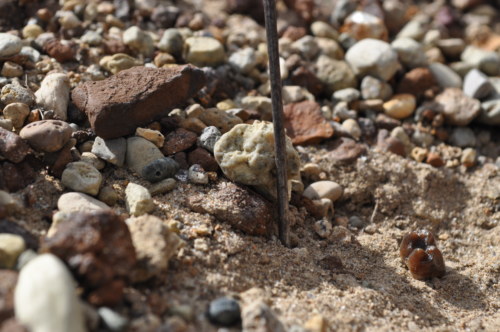
Basil found this Noropithecus bulukensis Molar.
On Thursday morning, we traveled back to Ileret, and the students have been busy preparing for their final examination before heading to Turkwel for the next module.
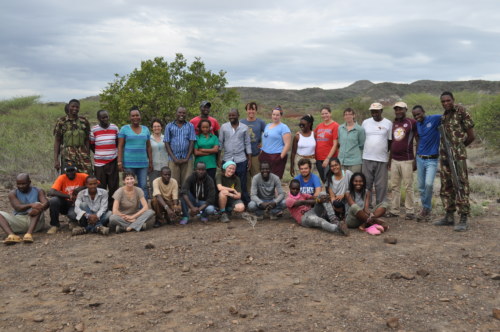
Team Buluk!!
Photo Credit: Wambui Mbogo.
More updates coming soon!





